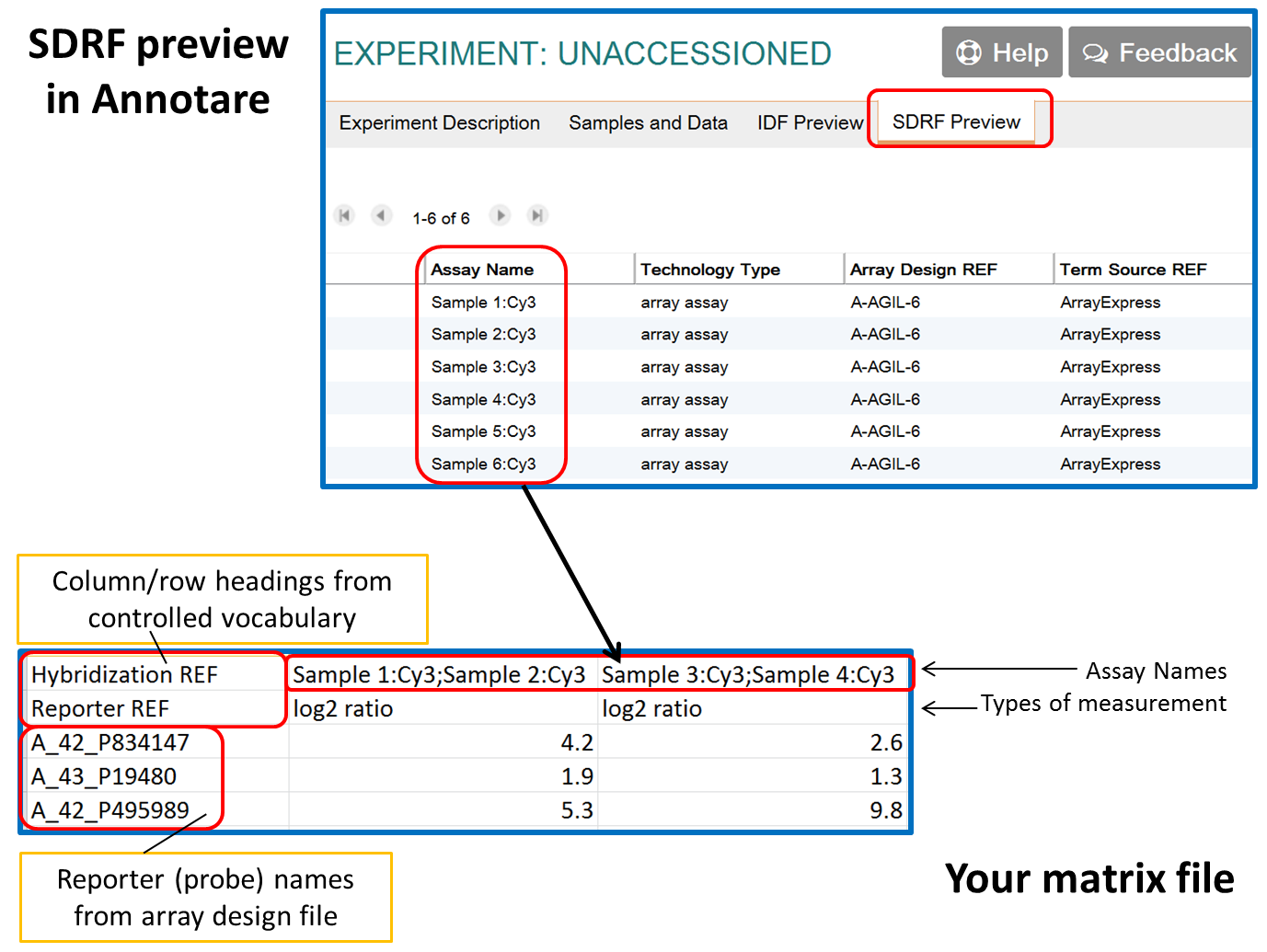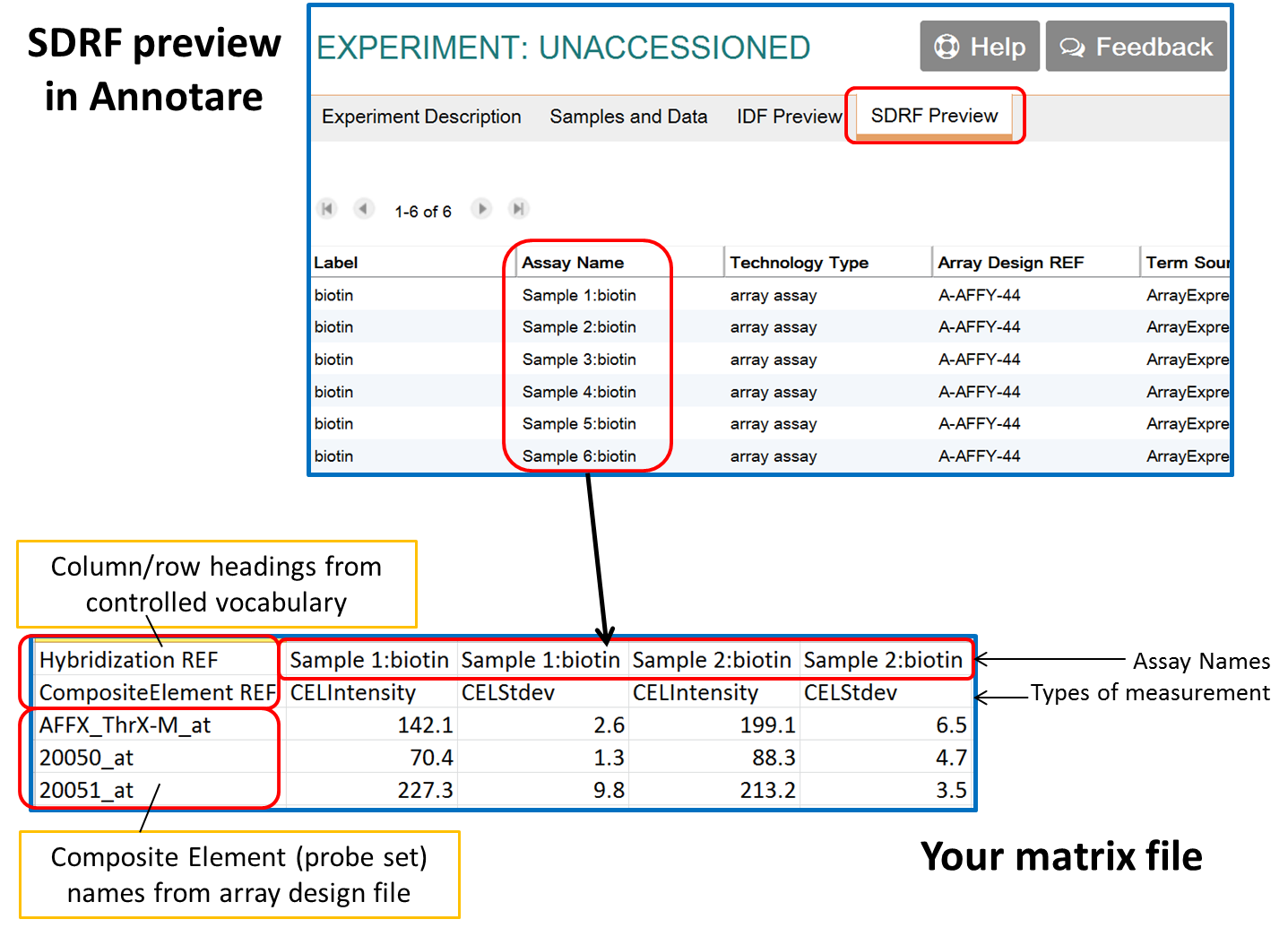"Strict" MAGE-TAB format for raw and processed microarray data matrix
This format allows each data point in the file to be mapped to a particular assay in the experiment, and to a particular probe/probe set in the array design file of your experiment. For the mapping to work smoothly, each matrix file should contain data from assays on a single array design (i.e if you use multiple array designs in your experiment, multiple matrix files will be needed), and the column/row headings and the order of columns are strictly controlled:
- Column/row headings:: The first header line of a matrix file,
Hybridization REF, allows assay-mapping via assay names, which are automatically generated by Annotare and can be found in theSDRF Previewtab while you are preparing your submission. The second header row lists the "quantitation types" for each column (i.e. the type of measurement recorded in the column, e.g.log2 ratio). Finally, the first column,Reporter REFis used to map the data rows to probe identifiers from the array design file. - Measurements calculated from multiple assays: Measurements such as Log2 fold-changes are often calculated from more than one assay (e.g. for every given gene, calculate the average of 3 knockout samples vs the average of 3 wild-type controls). In that case, you can put down multiple assay names per column, with the assay names separated by semi-colons:
- Order of data columns:The format requires an ordered and regular organisation of the columns: first by assay, and then by quantitation type:
| Hybridization REF | Hyb1;Hyb2;Hyb3 | Hyb4;Hyb5;Hyb6 |
| Reporter REF | log2 FC | log2 FC |
Correct
| Hybridization REF | Hyb1 | Hyb1 | Hyb2 | Hyb2 |
| Reporter REF | log2 FC | p-value | log2 FC | p-value |
Wrong
| Hybridization REF | Hyb1 | Hyb2 | Hyb1 | Hyb2 |
| Reporter REF | log2 FC | log2 FC | p-value | p-value |
Example non-Affymetrix data matrix
In this example, four of the six assays (as shown in the SDRF preview) are being mapped to log2 ratio values in the matrix file. Each row of data is mapped to a Reporter Name defined in the array design file, in this case, A-AGIL-6 (big file [4.2Mb]).

Example Affymetrix data matrix
In this example, two of the six assays (as shown in the SDRF preview) are being mapped to data with two different quantitation types (CELIntensity, CELStdev). Each row of data is mapped to a CompositeElement Name (because each Affymetrix probe set is made up of a number of probes), defined in the array design file, in this case, A-AFFY-44 (big file [4.5Mb]).
